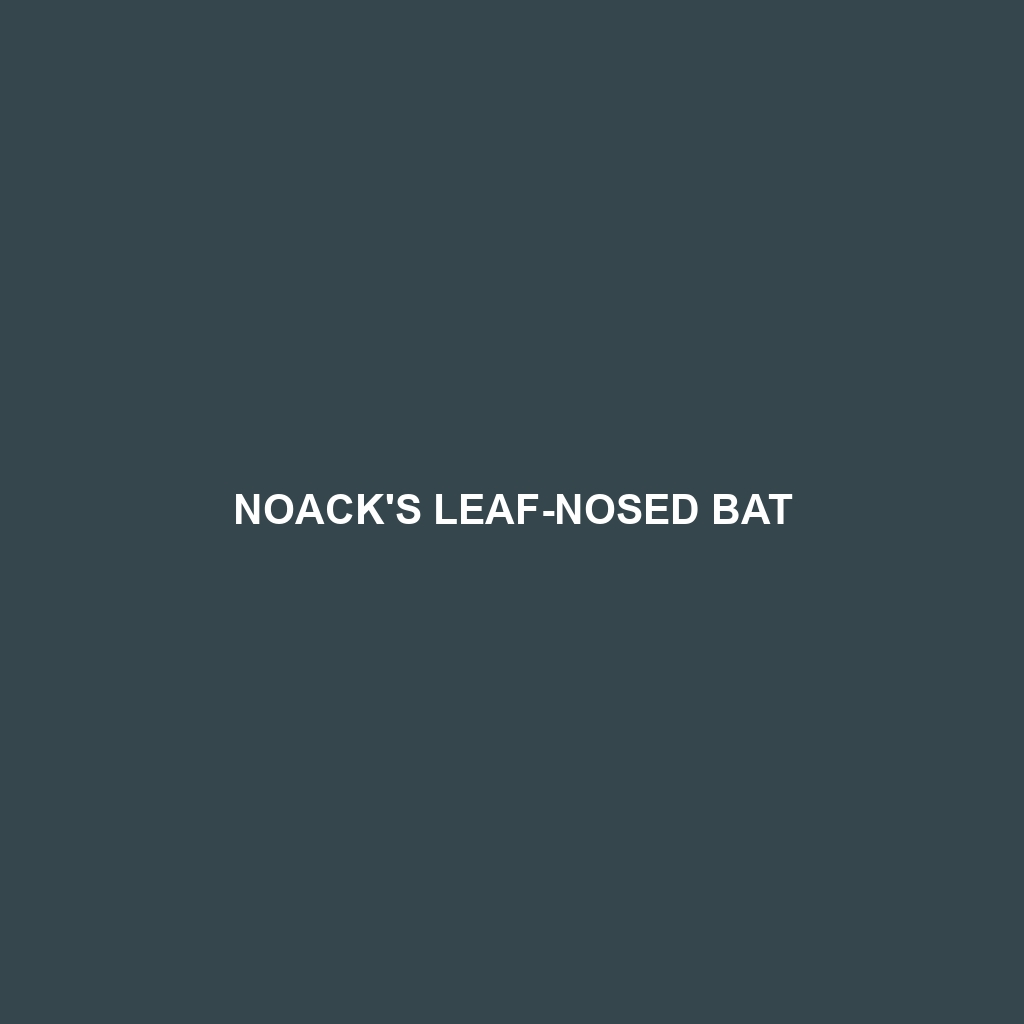Noack’s Leaf-nosed Bat
Common Name: Noack’s Leaf-nosed Bat
Scientific Name: Hipposideros pomona
Habitat
Noack’s Leaf-nosed Bat is primarily found in various regions of Africa, particularly in countries such as Tanzania, Kenya, and Uganda. These bats inhabit a range of environments, including moist lowland forests, dry savannas, and mountainous areas. Their preference for roosting sites often includes caves or old buildings, which provide shelter and suitable climates for their survival.
Physical Characteristics
This species typically has a body length of about 5 to 10 cm and a wingspan of approximately 25 to 30 cm. The fur of Noack’s Leaf-nosed Bat is generally soft and dense, exhibiting a coloration that ranges from light brown to gray. A distinctive feature of this bat is its leaf-shaped nose, which is used for echolocation, making it easier for them to navigate and hunt in their environment.
Behavior
Noack’s Leaf-nosed Bat is primarily nocturnal, engaging in activity during the night. They are known for their agile flight and tend to roost in communal groups, particularly in caves. These bats utilize a complex system of echolocation calls, which allows them to detect prey and navigate through dense foliage in their habitats.
Diet
The diet of Noack’s Leaf-nosed Bat consists mainly of insects, particularly moths and beetles. They exhibit foraging behaviors that involve hawking (catching insects while in flight) as well as gleaning (picking insects off foliage). This diet plays a crucial role in controlling pest populations in their ecosystems.
Reproduction
Noack’s Leaf-nosed Bat breeds seasonally, typically during the warmer months. Females usually give birth to a single pup after a gestation period of approximately 2 to 3 months. Maternal care is extensive, with mothers nursing their young until they are capable of flying and foraging independently.
Conservation Status
According to the International Union for Conservation of Nature (IUCN), Noack’s Leaf-nosed Bat is currently classified as vulnerable. Threats to its habitat, such as deforestation and human encroachment, pose significant risks to its population numbers.
Interesting Facts
- Noack’s Leaf-nosed Bat has a unique echolocation call that varies based on environmental conditions, showcasing their adaptability.
- These bats are social creatures, often seen roosting in groups that can number in the hundreds!
Role in Ecosystem
Noack’s Leaf-nosed Bat plays a vital role in its ecosystem as a pest controller. By feeding on large quantities of insects, they help maintain the balance of insect populations in their habitats. Additionally, their presence indicates a healthy environment, serving as bioindicators for ecological research.
